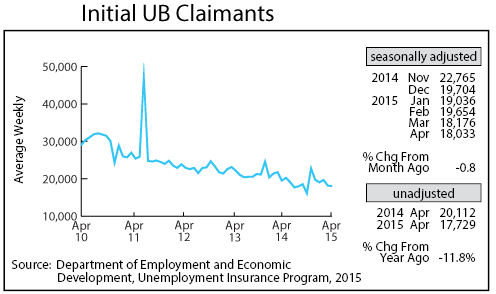by Dave Senf
May 2015
Note: All data except for Minnesota's PMI have been seasonally adjusted. See the feature article in the Minnesota Employment Review, May 2010, for more information on the Minnesota Index.
The Minnesota Index rose 0.3 percent for the third straight month, indicating that Minnesota's economy has picked up speed from the end of last year. Minnesota's index has increased faster than the U.S. index, which climbed 0.2 percent in April, for three consecutive months after lagging the U.S. index for almost all of 2014.
Minnesota has recorded solid wage and salary employment growth for the third month in a row, and unemployment dropped 0.1 percentage point to advance the index in April. The drop in unemployment last month occurred despite more people looking for jobs as labor force growth picked up. Acceleration in labor force growth plus job growth is a very positive sign that Minnesota's economy is off to a good start in 2015. Labor force participation for the state reached 70.7 percent, the highest level since October 2011. Minnesota's index was up 3.0 percent from last April, while the U.S. index was up 3.6 from a year ago.
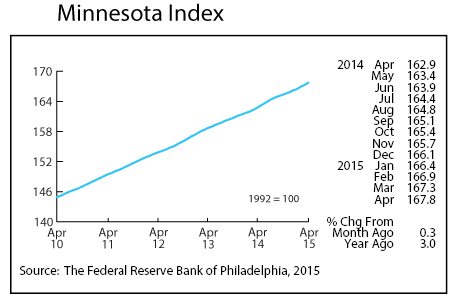
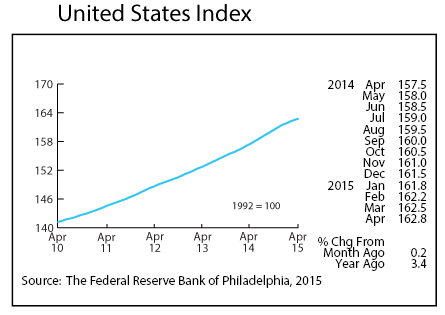
Adjusted Wage and Salary Employment jumped sharply for the third month in a row in April, increasing by 7,400 jobs even though 2,500 jobs were cut in the public sector. Private sector payrolls increased strongly for the third straight month in April with hiring led by Construction, Professional and Business Services, and Trade, Transportation, and Utilities. Construction employment soared, recording its largest monthly gain over the last 25 years. Four other sectors besides Government reduced their workforces with Educational and Health Services cutting the most jobs after Government. Minnesota has added 21,300 private sector jobs during the first four months of 2015 compared to 15,600 last year.
Minnesota's unadjusted over-the-year job growth slipped slightly to 1.7 percent in April compared to the national increase of 2.2 percent. Minnesota's job growth on a year-over-year basis hasn't been higher than the U.S. rate since July 2014.
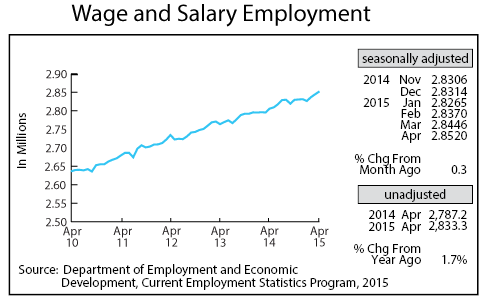
Minnesota's adjusted online Help-Wanted Ads declined by 4.8 percent in April. The decline was the steepest drop in over a year, but April's level was 14.7 percent above a year ago as online help-wanted advertising remains strong in the state. Help-wanted ad levels nationally slipped 1.9 percent for the month but were up 7.2 percent from a year ago. Minnesota online help-wanted ads accounted for 2.5 percent of ads nationwide compared to the 2.0 percent share of U.S. wage and salary employment Minnesota holds.
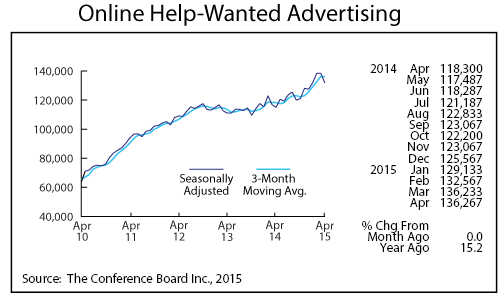
Minnesota's Purchasing Managers' Index (PMI) inched up to 51.3 in April after plummeting in March. The average reading for the last two months is the lowest two-month average since November 2012. Minnesota's index has slipped below the U.S. PMI over the last two months, ending 15 straight months of topping the U.S. index. The below U.S. readings suggest that Minnesota's economy will grow slower than the rest of the U.S. over the next few months. Minnesota's stronger PMI readings in 2014, however, did not translate into stronger job growth last year for the state. Minnesota's annual average job growth last year was 1.3 percent compared to the U.S. rate of 1.9 percent.
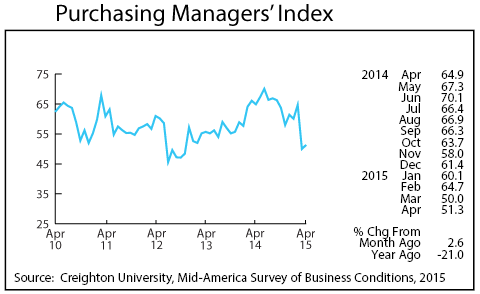
Adjusted Manufacturing Hours plummeted in April which is consistent with the slowdown warning issued by the recent drop in the state's PMI. April's 39.9 hour factory workweek was the lowest in five years. The 45-year average for non-recession months is 40.6 hours and 39.7 hours for recession months. The stronger U.S. dollar may be behind the drop in hours as Minnesota manufacturers experience challenging export markets.
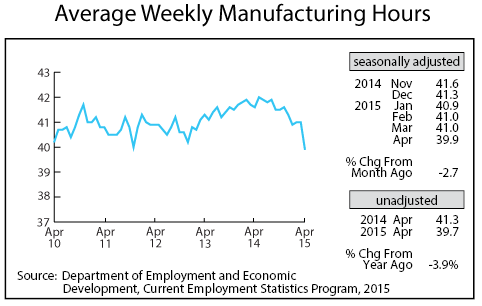
Manufacturing Earnings tumbled with wages declining steeply to $792.04. That is the lowest manufacturing paycheck in real terms since December 2012. Real factory paychecks have been lower than a year ago for eight straight months.
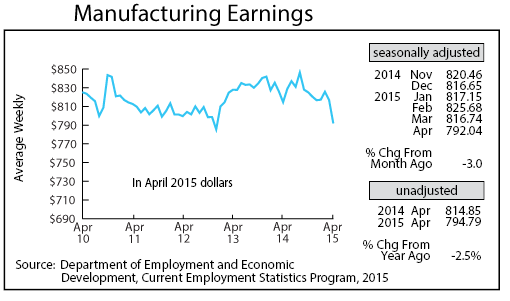
The Minnesota Leading Index is indicating the opposite of manufacturing hours and the PMI index. The state's leading index increased in April to its highest level since April 2014. April's 2.26 reading implies that Minnesota's economy will grow by 2.1 percent over the next six months.
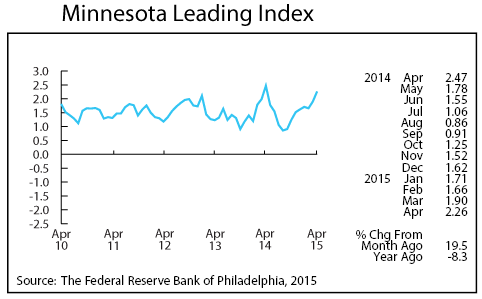
Adjusted Residential Building Permits were disappointing in April, declining 12.4 percent to the lowest level in five months. Minnesota's home-building recovery, like the nation's, continues to be bumpy.
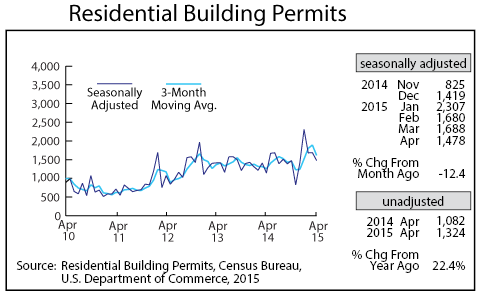
Adjusted Initial Claims for Unemployment Benefits (UB) tailed off for the second month in a row and continue to run below last year's levels. The low initial claims level continues to signal that Minnesota's job growth will continue to be solid over the next few months.
